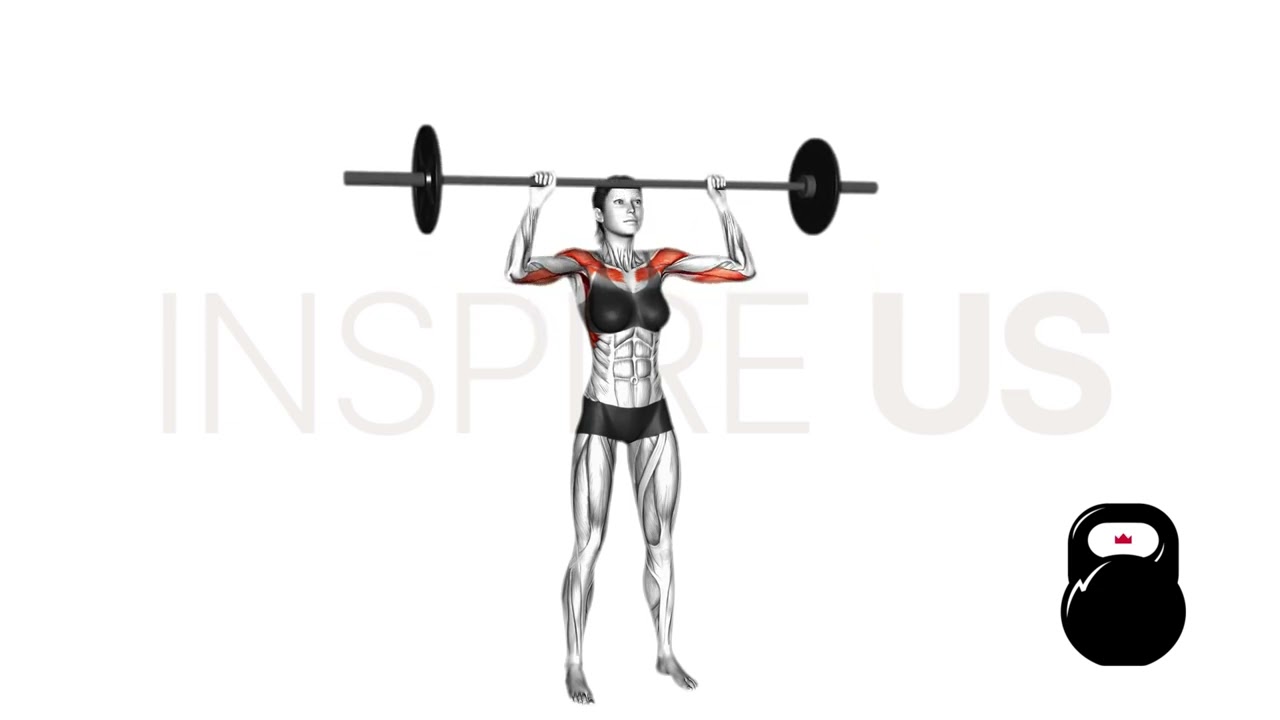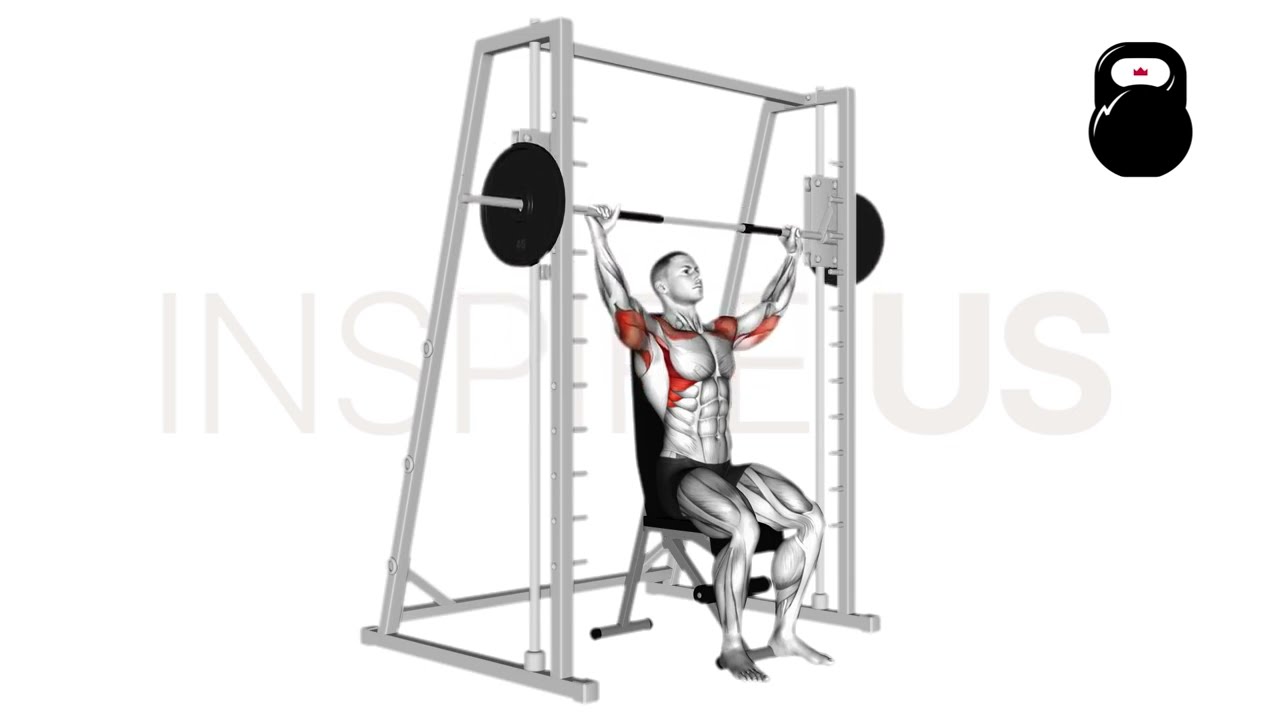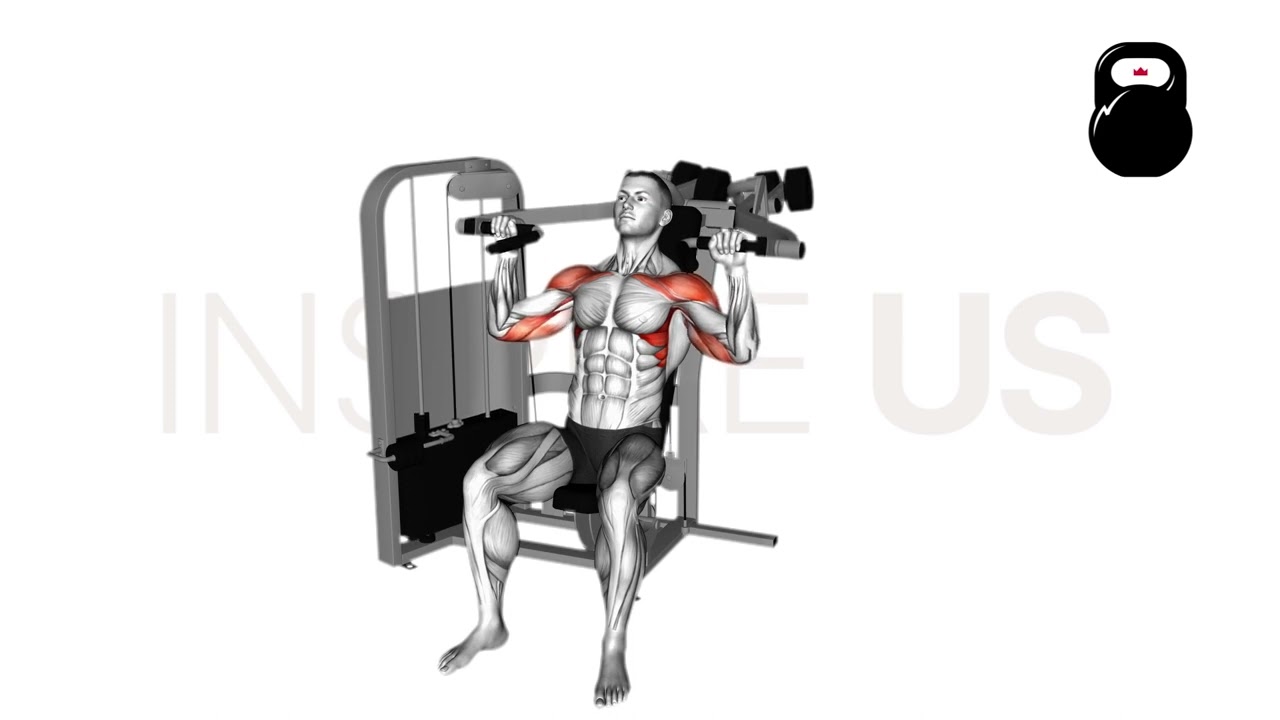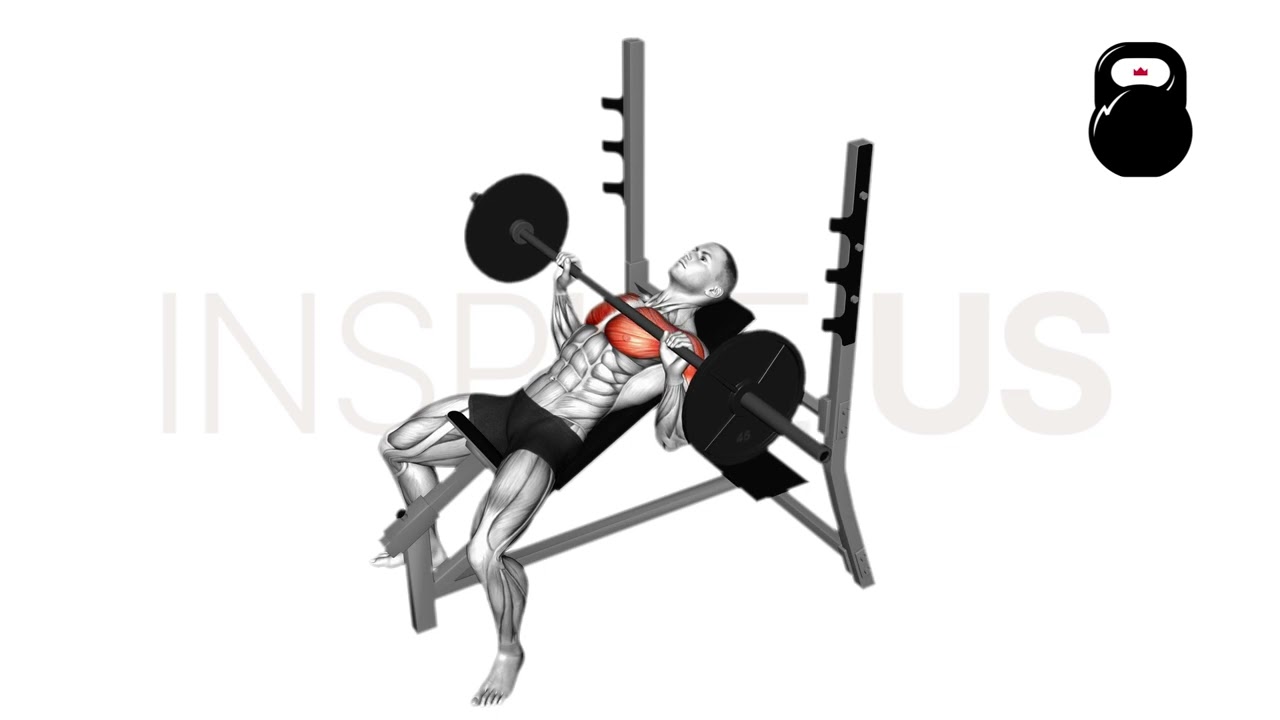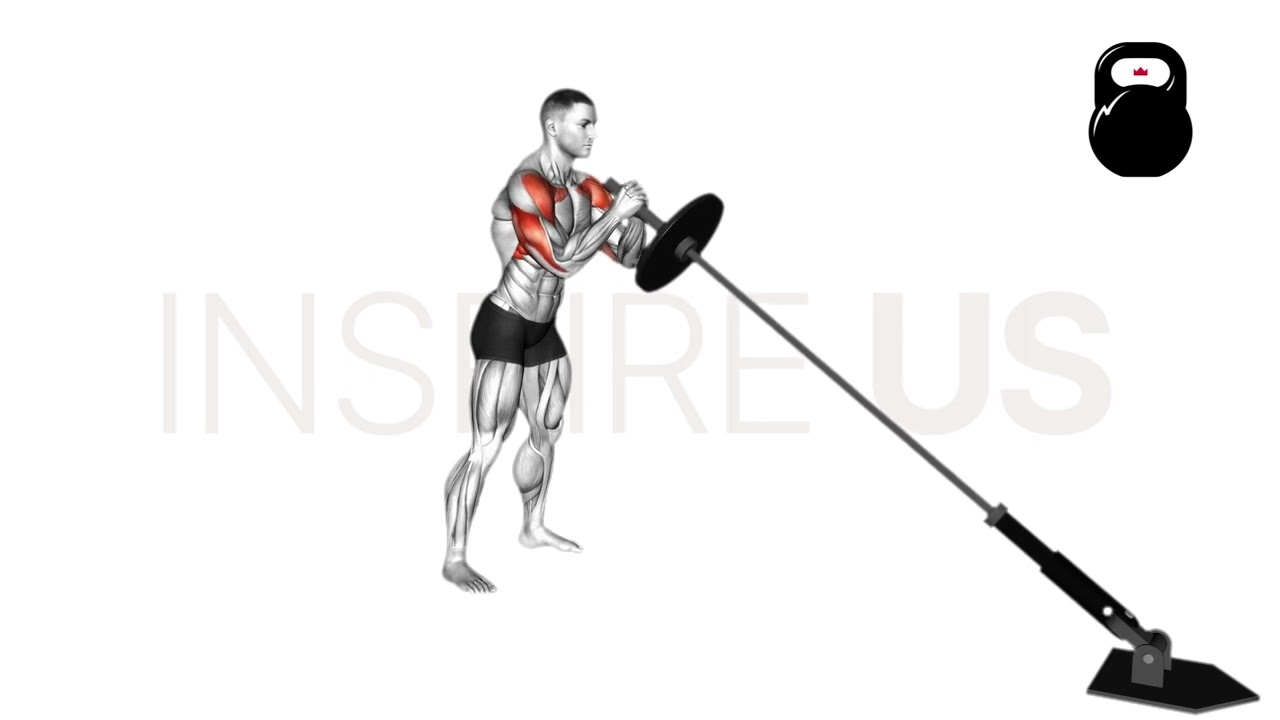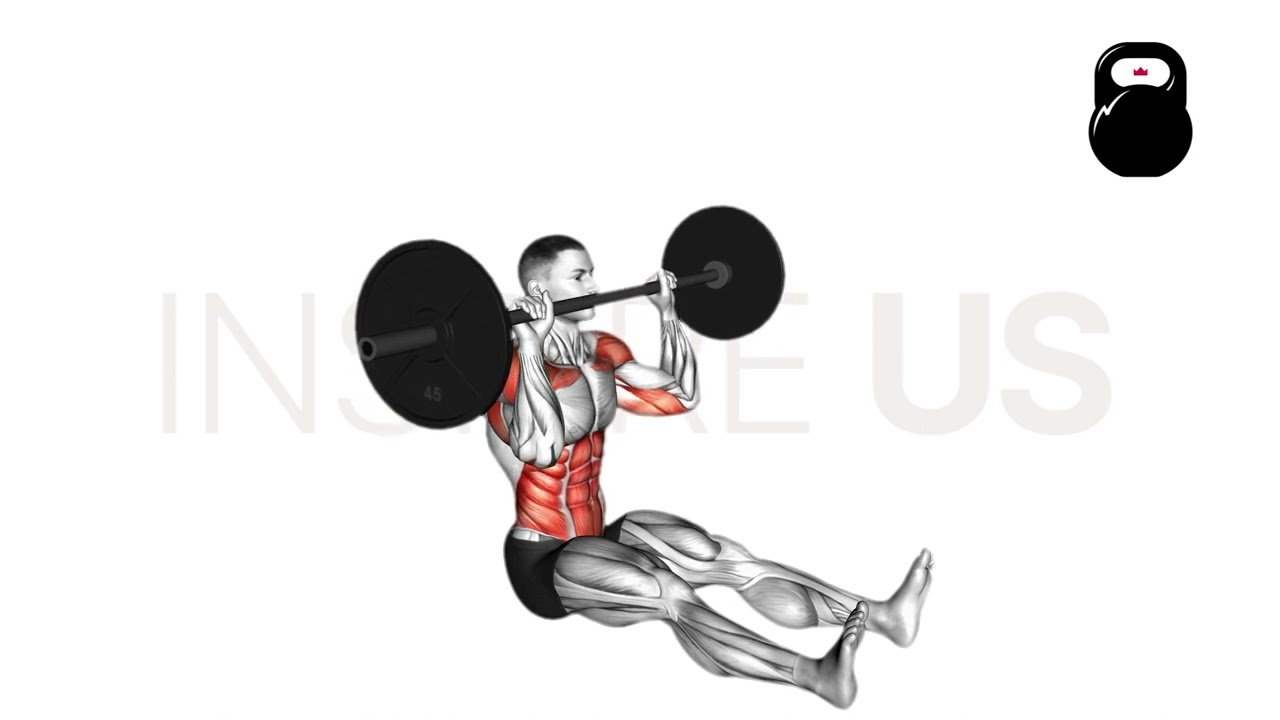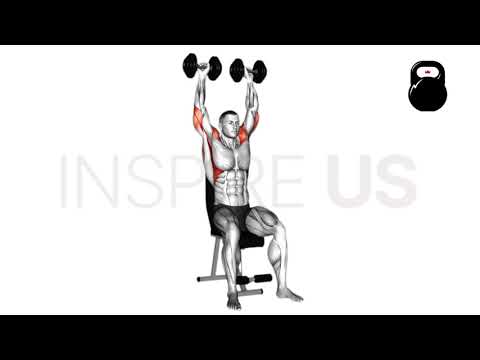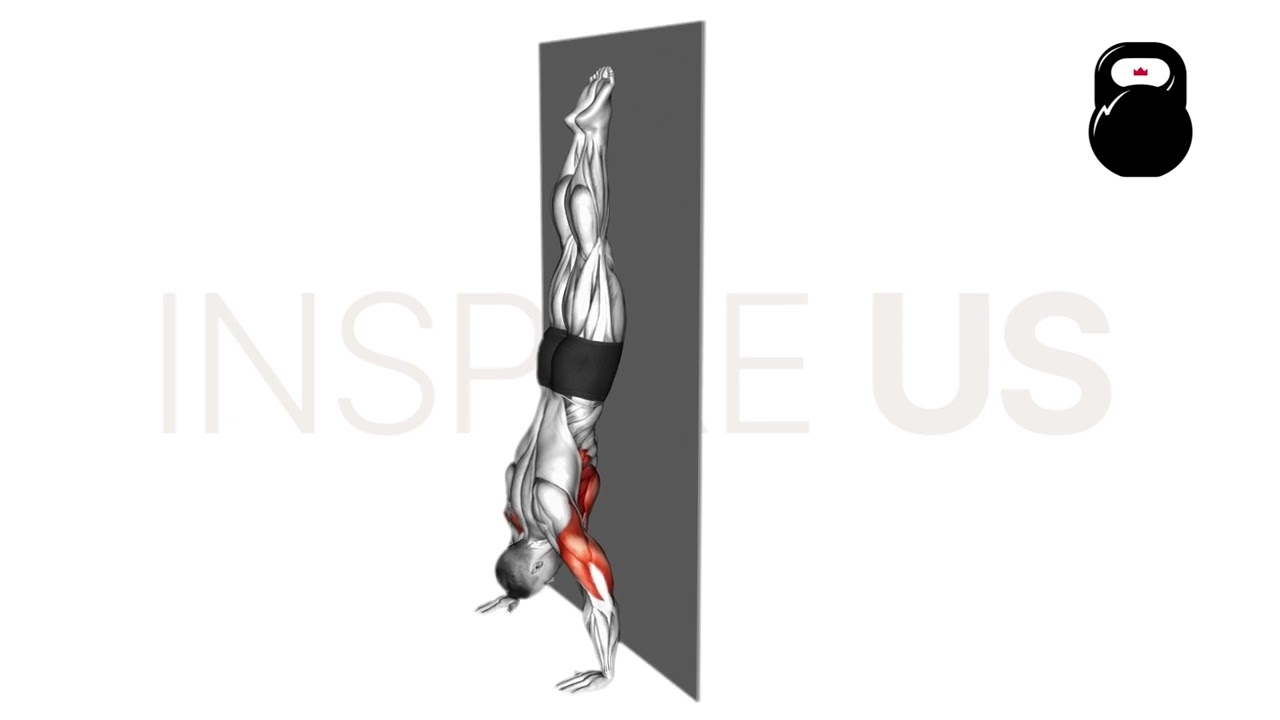7 Best Shoulder Press Alternatives (with Pictures!)
Although the conventional shoulder press is considered to be a considerably effective deltoid exercise, its anterior-biased recruitment pattern and use of free weights can present an obstacle for some.
Some of the best alternatives include:
- Barbell Military Press
- Smith Machine Overhead Press
- Lever Machine Overhead Press
- Barbell Incline Bench Press
- Landmine Press
- Arnold Press
- Handstand Push Ups
Shoulder Press Alternatives
1. Military Press
As can be derived from its namesake, the military press is simply a stricter variation of shoulder press where the hands are set slightly closer together and a narrower stance as a whole.
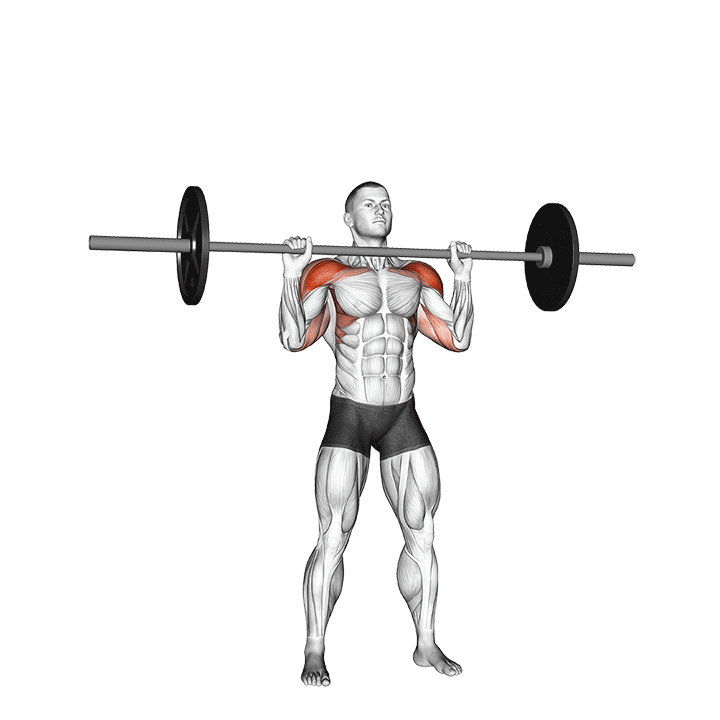
Much like the shoulder press, the military press is a compound vertical pushing movement primarily done to target the deltoid muscles.
However, because it is performed with a barbell while in a standing position, muscle groups other than the primary mobilizers play a considerably less important role. Furthermore, the narrower hand positioning equates to a somewhat larger range of motion, gearing it better towards strength and strict form adherence.
Equipment Needed
The military press requires only a barbell and a pair of weight plates. A barbell rack may also be used to help set-up and position the bar.
Common Mistakes to Avoid
Ensure the forearms begin vertical to the bar at the start and end of each repetition. If angled diagonally, increased strain on the wrist and shoulder joints may be sustained.
In addition, avoid jutting the head forwards at the apex of the repetition, as this can disbalance the movement and lead to injuries of the rotator cuff or cervical spine.
Sets and Reps Recommendation:
3-5 sets of 5-10 repetitions at a moderate load.
How-to:
Standing upright with the feet narrower than hip-width apart and the entire body forming a vertical line, the lifter holds a loaded barbell beneath their chin with the hands set approximately shoulder-width apart. The glutes and core should be squeezed to help facilitate a proper stance.
Now positioned correctly, the lifter pushes through their palms and extends the bar over their head - stopping once their arms are nearly locked out overhead.
Having completed the concentric half of the repetition, the lifter then slowly lowers the bar downwards along the same vertical path, avoiding elbow flaring as they do so.
Bar now beneath the chin once more, the repetition is considered to be complete.
2. Smith Machine Overhead Press
The smith machine overhead press is a machine-based variation of shoulder press with a far more restricted bar path alongside several safety mechanisms built into the smith machine itself.
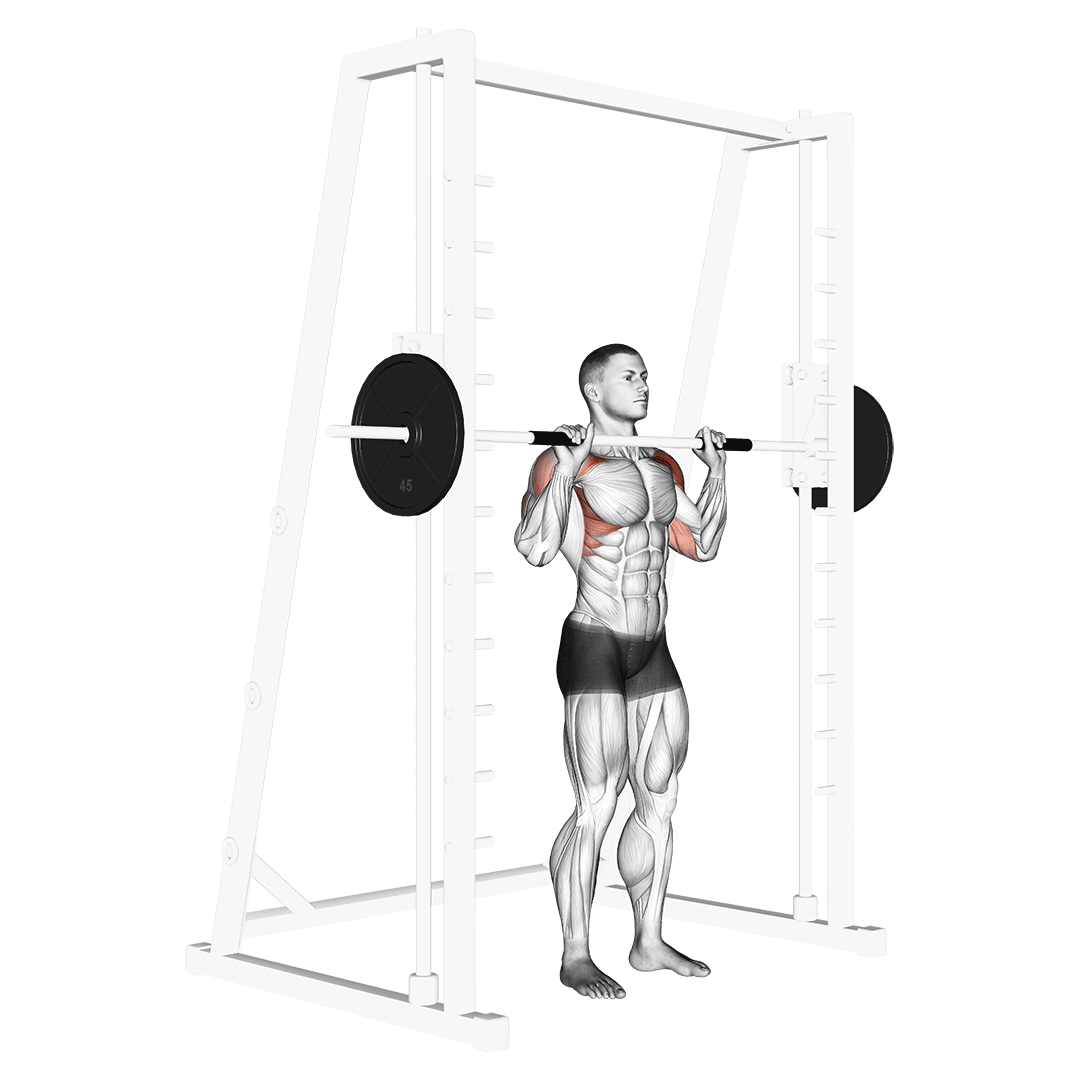
The smith machine overhead press is primarily done by lifters who have difficulty performing free weight shoulder presses without risking injury - or, occasionally, by strength athletes wishing to condition themselves to greater loads than a barbell overhead press would allow.
Apart from greater safety and a restricted bar path, the smith machine overhead press is also self-stabilizing, allowing for more energy to be directed towards dynamic contraction, rather than simple stabilization.
Equipment Needed
Apart from the smith machine itself, certain brands will also require the use of weight plates in the event that no built-in resistance is present. The exercise may also be performed seated, if so desired.
Common Mistakes to Avoid
Because the majority of smith machines tend to angle the bar at a slightly inclined angle, it is advisable to perform the press within the machine (facing outwards) so as to reduce strain on the rotator cuff.
Even with the added safety of the smith machine, it is important to remember to follow proper technique as much as possible.
Sets and Reps Recommendation:
3-5 sets of 8-12 repetitions at a moderate or heavy load.
How-to:
Positioning themselves with the bar at chin height, the feet planted shoulder-width apart and the hands a comfortable distance around shoulder-width, the lifter twists their wrists backwards to disengage the bar safety locks.
The scapula must be tucked behind the torso with the chest pushed out and the head facing forwards.
Bar now freely moving, the lifter pushes through their palms, moving the bar in a vertical direction upwards until their elbows are nearly locked out.
Having completed the concentric portion, the lifter then allows the bar to travel back down towards their clavicles as they control the speed of descent.
Once the bar is back beneath the chin, the repetition is considered complete. The bar may be locked back into place by simply rolling it forwards.
3. Machine Overhead Press
A dedicated resistance machine meant specifically to replicate the movement pattern of the shoulder press; machine overhead presses are the ideal alternative for maximizing volume and minimizing risk of injury while targeting much the same muscle groups.
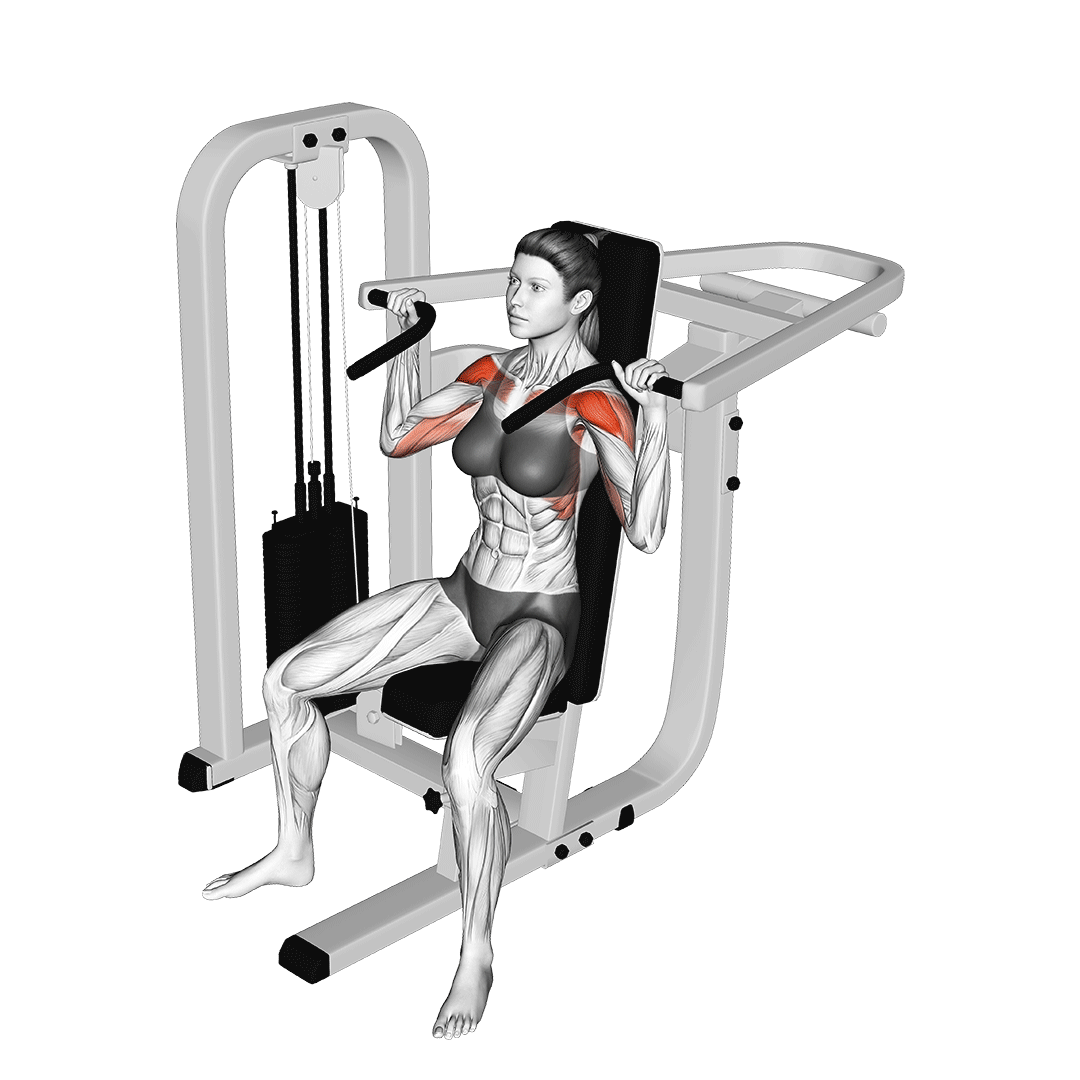
In most cases, the overhead press machine will involve a seated position with a pair of handles several inches away from the anterior deltoid heads.
While somewhat limiting in terms of range of motion, the machine overhead press more than makes up for it with greater safety, adjustability and improved volume/load capacity.
Equipment Needed
A shoulder press or overhead press machine is all that’s needed.
Common Mistakes to Avoid
The majority of shoulder press machines can be adjusted to better fit individual lifter proportions. Ensure it is adjusted appropriately so as to maximize range of motion.
Avoid using machine-based exercises as your primary source of training if you are a strength athlete or seeking functional fitness, as they tend to develop isometric strength to a lesser degree - something required in real-life strenuous activity.
Sets and Reps Recommendation:
3-5 sets of 8-12 repetitions at a moderate load.
How-to:
Seating themselves within the machine after adjusting it appropriately, the lifter grips both handles with their hands slightly wider than shoulder-width apart, arching their lower back against the backrest and retracting their scapula as they do so.
Now positioned correctly, the lifter drives through their palms and pushes the handles overhead - continuing the movement until their elbows are nearly completely extended.
Concentric half of the repetition now completed, the lifter need simply allow the resistance of the machine to slowly lower their arms back down. At this point, the repetition is considered complete.
4. Incline Bench Press
In cases where the shoulder press is actually programmed so as to target the upper section of the pectorals, a more effective exercise selection would be performing the bench press at an incline between 30 and 45 degrees.
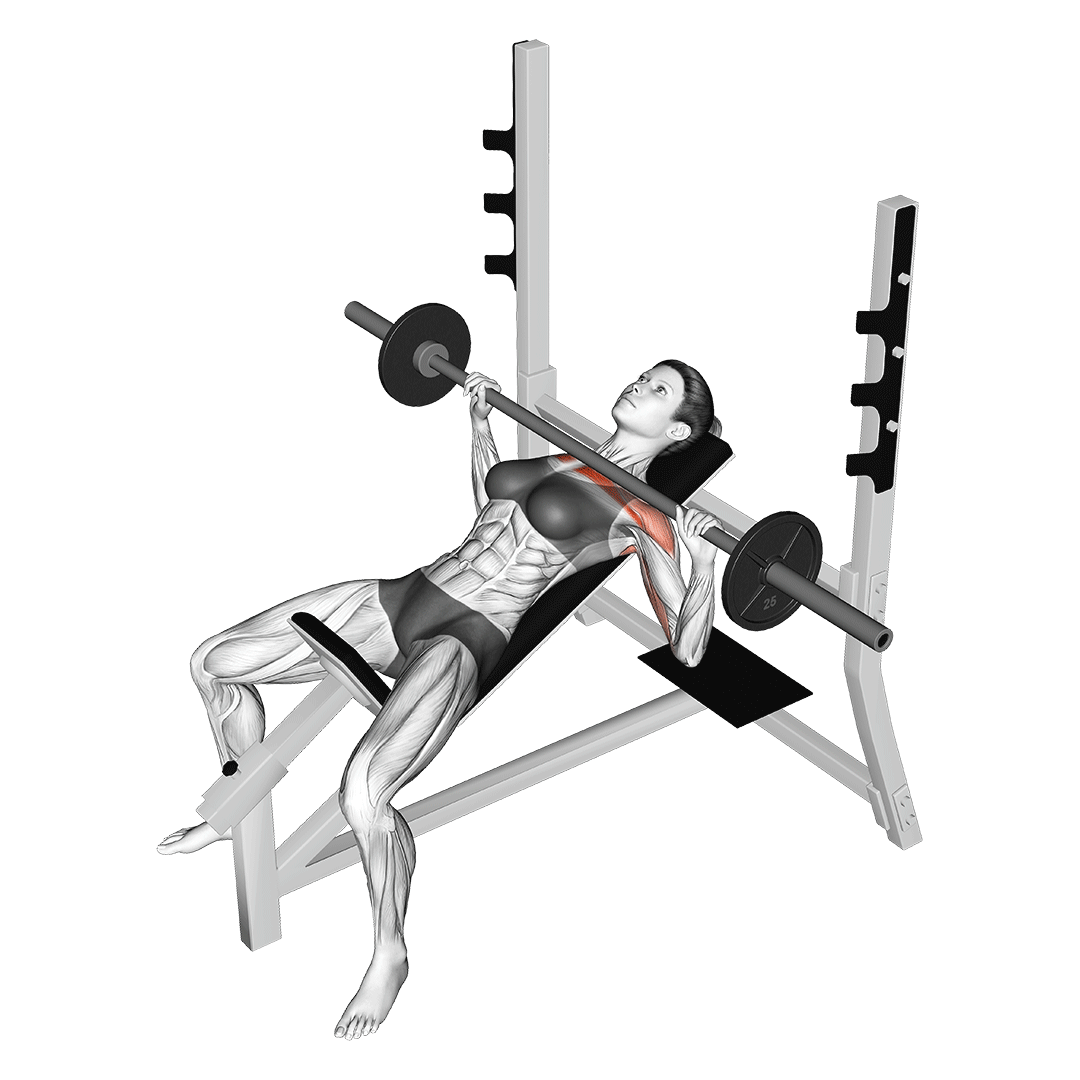
Although featuring considerably less medial and posterior deltoid involvement, greater emphasis on the anterior deltoid head and upper chest will be present.
Outside of acting as a substitute exercise to the shoulder press, the incline bench press may also be used as a synergistic exercise for even greater horizontal and vertical pushing strength.
Equipment Needed
An incline bench, barbell and pair of weight plates will be needed.
Common Mistakes to Avoid
Ensure the scapula is retracted and that the elbows do not flare out to the sides - regardless of bench press variation. Both errors in technique can easily lead to injuries of the upper trunk, especially with the incline variation of bench press.
Remember that the incline bench press is also a situational substitute.
It does not produce the same muscular recruitment or overall movement pattern as the shoulder press, and is solely meant to act as an alternative if the lifter requires greater emphasis on the front deltoid head or upper chest.
Sets and Reps Recommendation:
3-5 sets of 6-12 repetitions at a moderate load.
How-to:
Seating themselves atop an incline bench with their feet planted on the floor, retracted scapula pinned against the beneath and a small arch in their lower back, the lifter then sets their hands slightly wider than shoulder-width apart along the bar.
Unracking the bar by extending their elbows, the lifter begins the repetition by slowly lowering the bar towards their chest - taking care not to flare their elbows out to the sides as they do so.
Once the bar touches the upper section of their chest, the lifter drives through the palms of their hands and presses the bar at a slightly diagonal angle upwards.
With the arms straightened and the elbows nearly completely locked out, the repetition is considered to be complete.
5. Landmine Press
The landmine press is a variation of barbell shoulder press where one end of the bar is placed within a landmine apparatus, creating a unique angle of resistance and allowing for a somewhat more natural movement pattern to be achieved.
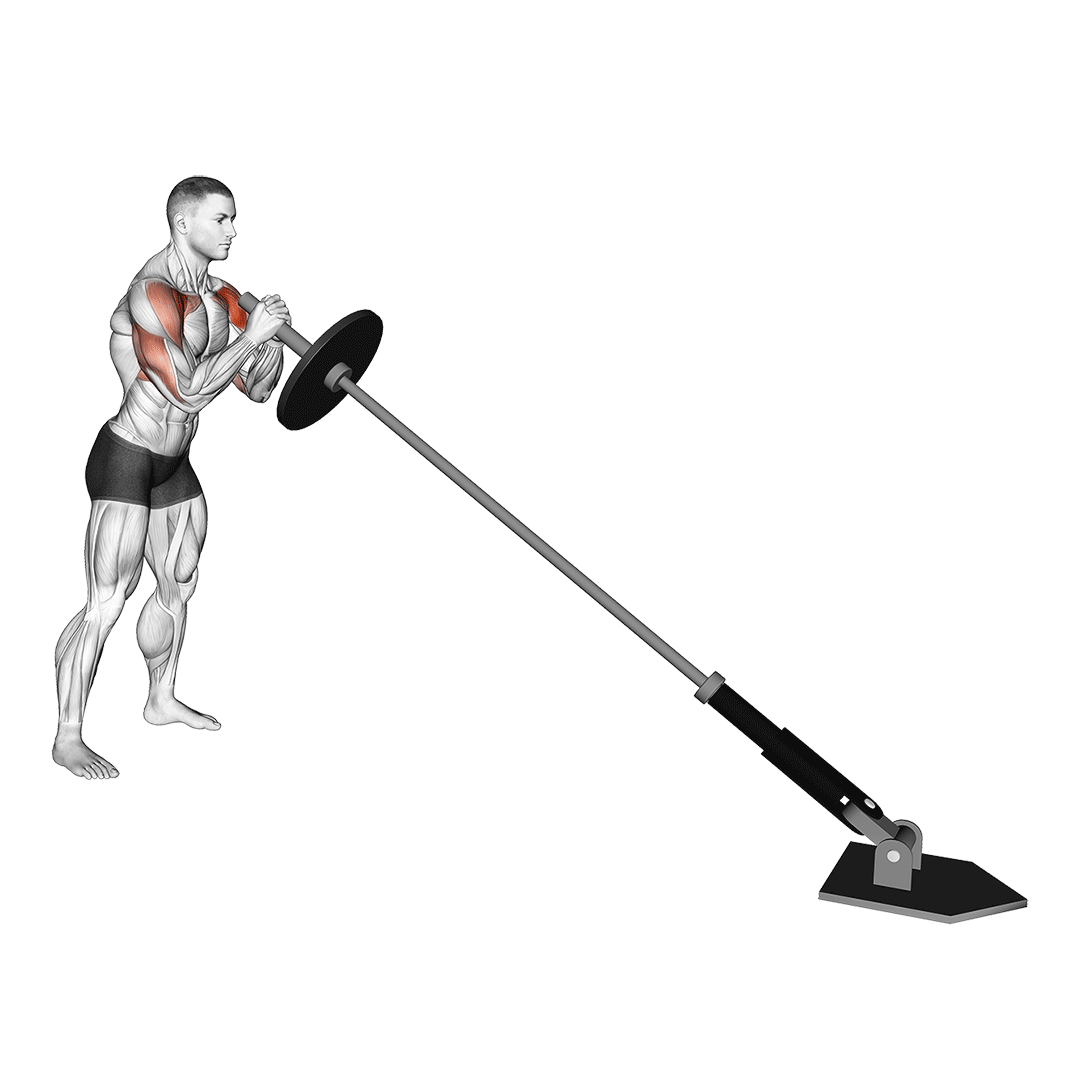
Because the barbell is held at an angle within the landmine, the lifter will need to press the bar both upwards and forwards - creating greater engagement of the chest and anterior deltoid heads while also relieving the shoulder and elbow joints of strain that would otherwise be present.
Apart from such differences, the landmine press is also considerably more narrow as far as hand positioning is concerned.
Equipment Needed
Apart from a landmine apparatus, a barbell and weight plate will also be needed.
If no landmine is present, the opposite end of the bar may be wedged beneath a sufficiently secure object, such as a rack or several weight plates.
Common Mistakes to Avoid
Avoid leaning the body forwards at the top of the repetition, as this can lead to a loss of balance or cause the scapula to elevate into a disadvantageous position.
If you have difficulty performing the overhead landmine press without involving your lower body, try performing the exercise while kneeling or seated on the floor.
Sets and Reps Recommendation:
3-5 sets of 8-16 repetitions at a light or moderate load.
How-to:
With one end of the barbell secured in place, the lifter faces themselves towards the loaded end, gripping it in both hands as they hoist it up to approximately chest-height.
The scapula must be retracted behind the body and the torso kept vertical throughout the entire set.
Now positioned correctly, the lifter raises the end of the barbell upwards - allowing it to curve away from them as they reach the apex of the repetition.
The elbows will extend both forwards and upwards as this occurs, requiring the lifter to avoid internal shoulder rotation so as to reduce strain within the joint.
Arms now extended with the bar held overhead, the lifter slowly reverses the motion along a similar arc until the end is once again pointed at their chest. At this point, the repetition is considered to be complete.
5. Z-Press
The Z-press is an advanced form of horizontal free weight press involving the lifter being seated legs-straight atop the floor.
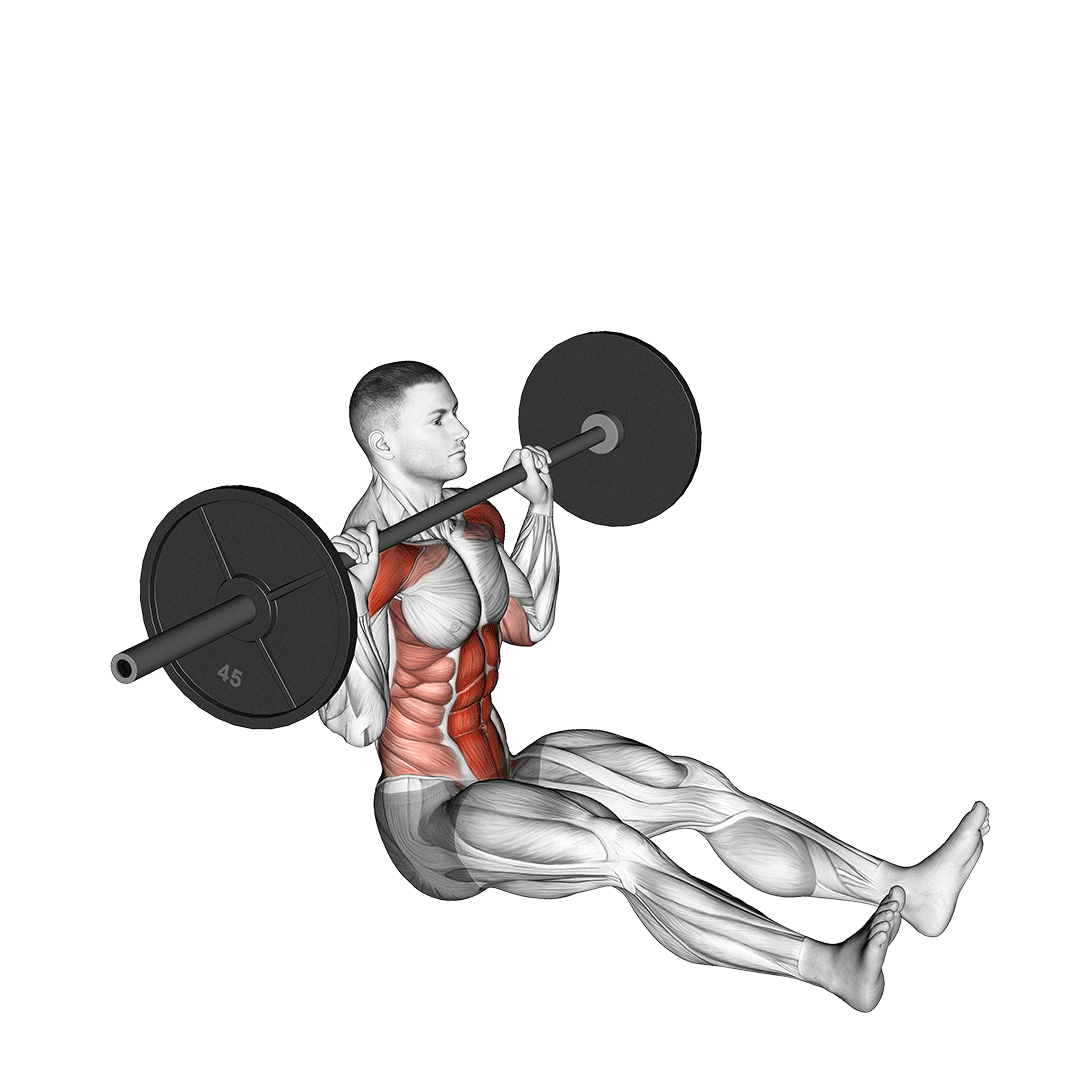
Essentially, the Z-press is the ultimate in terms of overhead press technique adherence, succeeding even the military press in isolating the deltoids, triceps and upper chest.
However, this greater isolation comes at the cost of greater core stability and a higher posterior chain requirement as the lifter will need to perform a set of shoulder presses without raising their legs off the floor. Occasionally, the Z-press is also used as a temporary substitute when no barbell rack is present.
Equipment Needed
The Z-press requires only a barbell and a pair of weight plates.
Common Mistakes to Avoid
Avoid performing the Z-press with the legs too close together, as doing so makes the movement needlessly more difficult to stabilize. A wider base will reduce the exertion required of the core muscles and require somewhat less posterior chain flexibility to maintain.
Another mistake to look out for is hinging or bending the torso forwards so as to generate excessive momentum. Ensure the torso remains stationary throughout the entire set - generating momentum in this way can lead to acute injuries of the lower back and spine.
Sets and Reps Recommendation:
2-3 sets of 6-10 repetitions for advanced strength development, 3-5 sets of 8-16 repetitions for less emphasis on maximal loading
How-to:
Seating themselves with the legs extended along the floor and a loaded barbell racked atop the chest shelf, the lifter braces their core and ensures their scapula is retracted prior to beginning the repetition.
The hands should be slightly wider than shoulder-width apart along the bar, head facing forwards and lower back neutral throughout the entire set.
Now positioned securely, the lifter drives through their palms and pushes the bar over their head, focusing on keeping the trunk stationary as their arms fully extend upwards.
With the elbows nearly locked out and the bar held aloft, the lifter then slowly releases tension in their deltoids as they lower the bar back towards their chest shelf in a controlled manner.
With the bar back in its starting position (and the legs still in place) the repetition is complete.
6. Arnold Press
The Arnold press is a variation of dumbbell shoulder press where the lifter rotates their wrists as the exercise is performed, engaging the biceps brachii and providing an additional aspect of complexity to the overall technique.
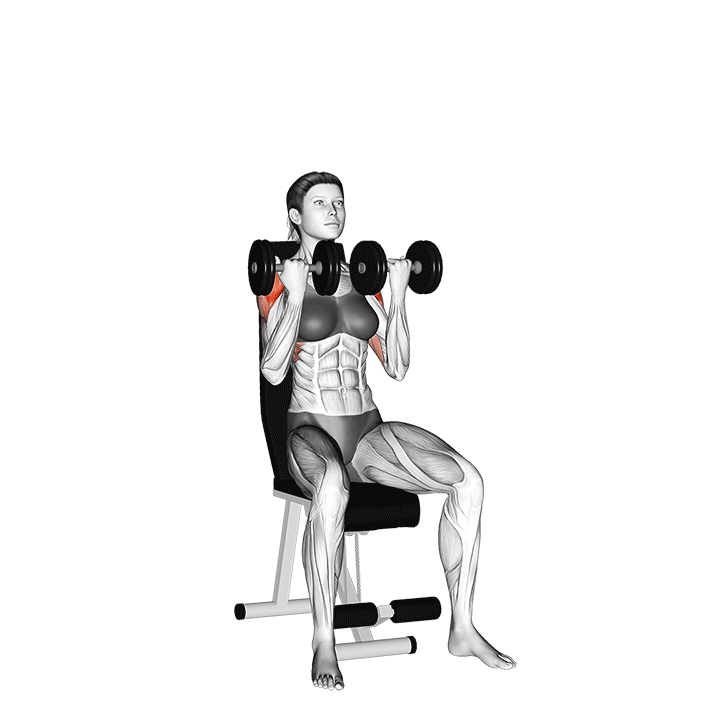
Although not quite the most effective exercise for deltoid isolation or sports-specific strength development, the Arnold press is nonetheless quite useful for inducing comprehensive muscular hypertrophy of multiple small muscle groups simultaneously. It is excellent as a conventional shoulder press alternative for bodybuilders or individuals short on time.
Equipment Needed
The Arnold press is traditionally performed with only a pair of dumbbells. The exercise can be done either seated or standing.
Common Mistakes to Avoid
Avoid rapidly twisting the wrists around, as doing so can increase torsion on the elbows and the wrist joints themselves.
Aim to time the rotation of the dumbbell alongside its transition from being beneath the chin to its position above the head, performing both movements simultaneously.
Sets and Reps Recommendation:
2-3 sets of 10-20 repetitions at a light load.
How-to:
To perform an Arnold press, the lifter begins by holding a pair of dumbbells close together, their palms facing inwards, their elbows pointing forwards and scapula partially retracted.
From this position, the lifter simultaneously begins to press their arms over their head while rotating their wrists into a pronated position.
The palms should face outwards by the time the dumbbell is approximately at head-height, creating a conventional dumbbell shoulder press from that point onwards.
With the arms now fully extended overhead, the lifter reverses the motion by first lowering the dumbbells to head-height before rotating the wrists back into a supinated orientation.
The repetition is complete once the dumbbells are once again positioned beneath the chin with the palms facing inwards.
7. Handstand Push-Ups
Handstand push-ups are an advanced calisthenics exercise involving the athlete pushing their entire body away from the floor as they suspend themselves in a fully unsupported handstand position.
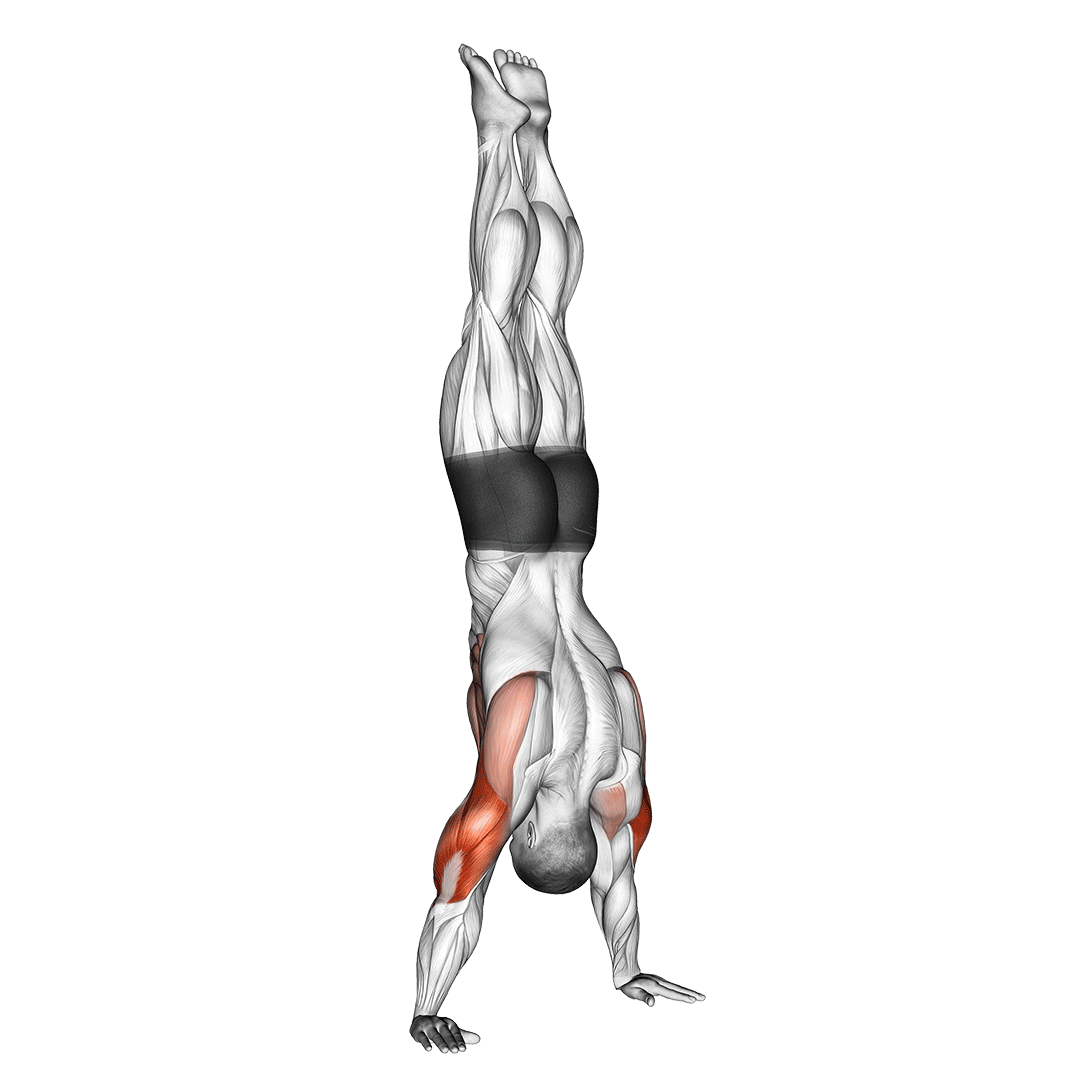
The handstand push-up is considerably difficult, but can serve as an effective shoulder press alternative as they both feature a deltoid-focused recruitment pattern.
Of course, the greater isometric contraction, greater complexity and lack of adjustability make it a poor shoulder press substitute for sports-specific strength development or maximizing deltoid hypertrophy.
Despite such disadvantages, the HSPU can be an effective substitute in cases where no training equipment is present - or for those who wish to focus more on bodyweight training.
Equipment Needed
Like most bodyweight exercises, no equipment is needed for the handstand push-up.
Common Mistakes to Avoid
Aim to keep the body relatively vertical, as curving the legs away from the center of mass can make the movement more difficult to stabilize than necessary.
Sets and Reps Recommendation:
2-3 sets of AMRAP (as many repetitions as possible) should serve as a highly intense workout.
How-to:
To perform a handstand push-up, the athlete either performs a “kick-up” into a vertical hollow body stance or walks their feet up a wall before detaching into the same stance.
The core should be fully contracted, the legs extended straight and the hands slightly wider than shoulder-width apart flat along the ground. The glutes should also be squeezed with the toes pointed for even greater stability.
Once in a strict handstand stance, the athlete then bends at the elbows and lowers their head towards the floor in a slow and careful manner.
When the floor is several inches away from touching the head, the athlete drives through their palms and presses their body away from the floor into full elbow extension.
Arms now fully extended and the body back at its starting elevation, the repetition is considered complete.
Which Shoulder Press Alternative is Best?
There is no specific “best” shoulder press alternative, as each serves a unique purpose within the larger scheme of exercise selection.
If you wish to maximize safety or volume, machine-based alternatives like the smith machine overhead press or machine shoulder press are best. Likewise, for true horizontal strength development, the Z-press or military press are superior.
References
1. Błażkiewicz M, Hadamus A. The Effect of the Weight and Type of Equipment on Shoulder and Back Muscle Activity in Surface Electromyography during the Overhead Press-Preliminary Report. Sensors (Basel). 2022 Dec 13;22(24):9762. doi: 10.3390/s22249762. PMID: 36560129; PMCID: PMC9781216.
2. Coratella G, Tornatore G, Longo S, Esposito F, Cè E. Front vs Back and Barbell vs Machine Overhead Press: An Electromyographic Analysis and Implications For Resistance Training. Front Physiol. 2022 Jul 22;13:825880. doi: 10.3389/fphys.2022.825880. PMID: 35936912; PMCID: PMC9354811.

